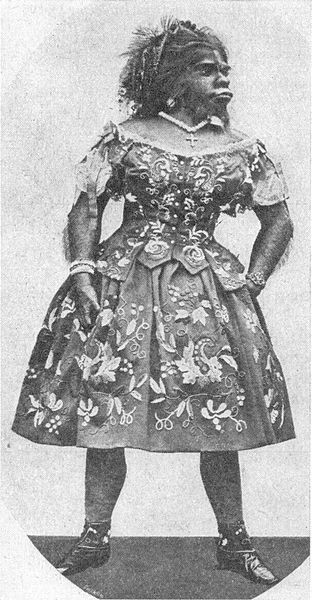
Julia Pastrana, better known as "Ape woman," was given a proper burial in Sinaloa de Leyva, Mexico, after 150 years as a specimen at University of Oslo.
Born with hair that grew all over her body as well as ape-like facial features, Julia 's rare medical condition had forced her into the sick lifestyle of the traveling circus.
Known as "Ape Woman" or "The Ugliest Woman In The World," Julia performed across the United States, Canada and Europe as well. Promotional brochures and local newspapers called Pastrana "gorillalike" and "revolting in the extreme." According to iScience Times, writer Jan Bondeson even mentioned that a doctor determined Pastrana as the result of a human mating with an orangutan.
Pastrana later married her manager Theodore Lent. Though Pastrana was genuinely seeking love, Lent married to have more control over her body and the fortune it entailed. Lent taught Pastrana how to dance as well as speak three different languages. Eventually, Julia Pastrana was pregnant with their child.
Upon childbirth, doctors realized Julia Pastrana's son suffered the same conditions as her mother. Unfortunately, the infant died within hours and the mother died five days later due to complications.
Theodore Lent embalmed his wife and son and continued on with the traveling exhibition. Later, Julia Pastrana's body was kept in a storage at the University of Oslo for research.
Some 150 years later, New York-based visual artist Laura Anderson Barbata learned about Pastrana's story from a play that her sister, Kathleen Anderson Culebro, had produced. The play was "The True History of the Tragic Life and Triumphant Death of Julia Pastrana, the Ugliest Woman in the World."
"I felt she deserved the right to regain her dignity and her place in history, and in the world's memory," said Barbata. "I hoped to help change her position as a victim to one where she can be seen in her entirety and complexity. By ending up as part of a collection in a basement, she lost any trace of dignity. My ultimate dream goal was that she should go back to Mexico and be buried."
An effort that took a decade, Julia Pastrana's body was finally sent back to Sinaloa de Leyva, on Tuesday. Many mourners and spectators gathered around Pastrana's coffin.
"A human being should not be the object of anyone," Father Jaime Reyes Retana said.
"Imagine the aggression and cruelty of humankind she had to face, and how she overcame it. It's a very dignified story," said Sinaloa Governor Mario Lopez.
© 2025 Latin Times. All rights reserved. Do not reproduce without permission.




